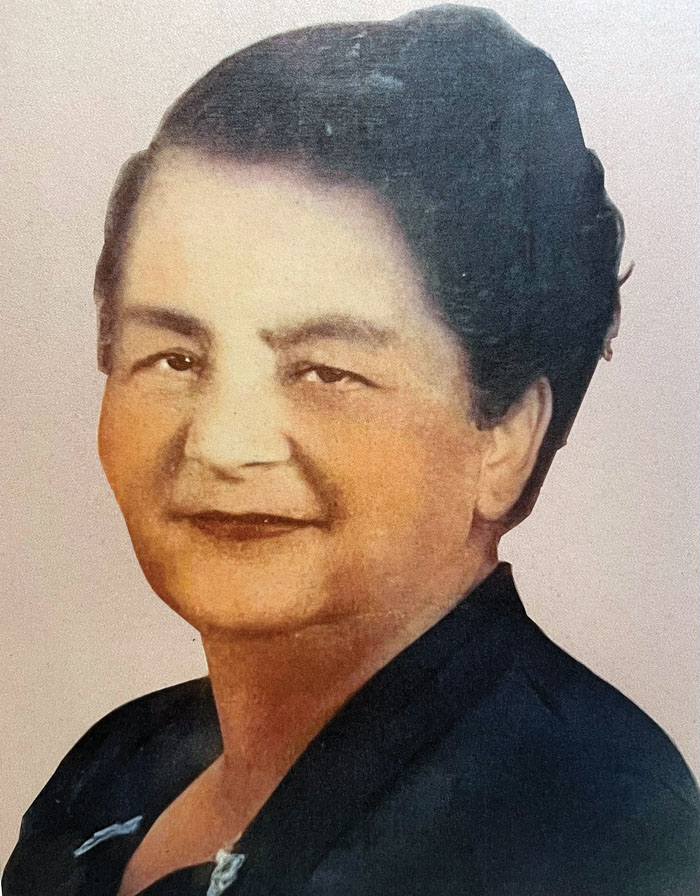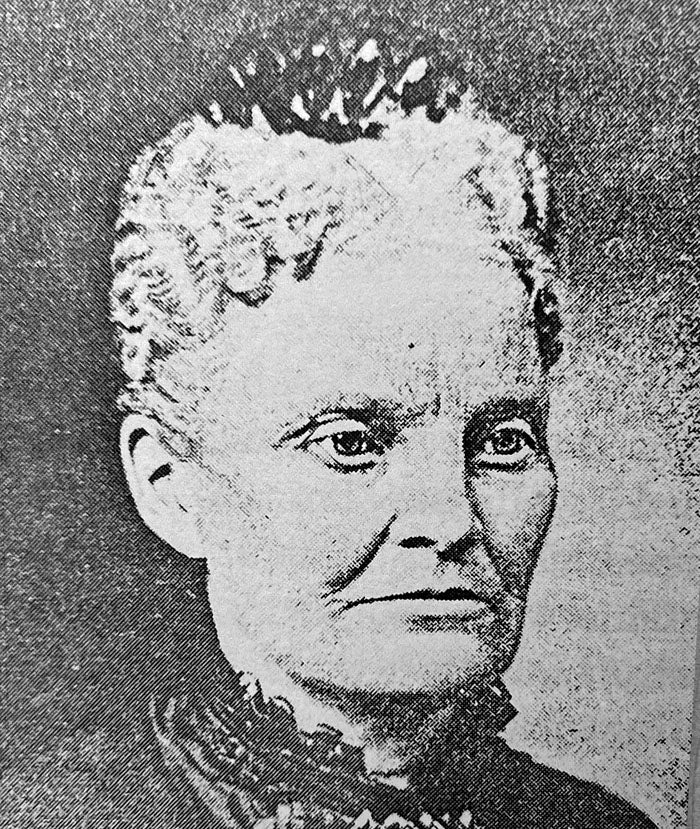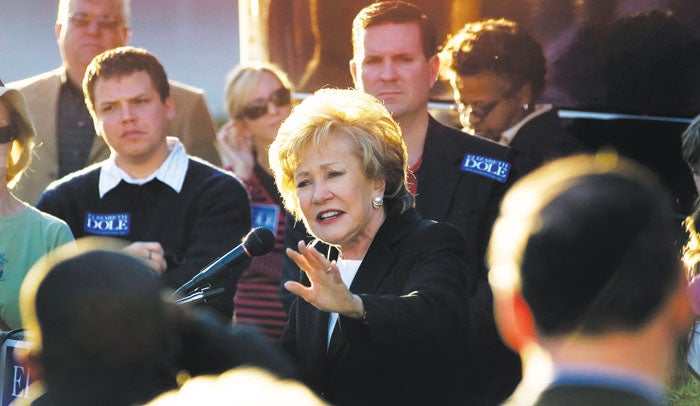Spirit of Rowan 2023: The women behind Rowan
Published 12:00 am Sunday, March 26, 2023
Rowan County has a feminine side.
In fact, the first leader historically documented in what is now Rowan County was a woman. Known today only as Guatari Mico, which was the term used by the Native American Wateree tribe for chief, she had 39 chiefs under her. She was the ruler discovered by the Spanish expedition of Juan Pardo in 1567, who changed the name from Guatari to Salamanca. Sadly, the actual name of the chief is not known.
Rowan County initially was a much larger territory, with an undefined western border. Rowan was the birth place of multiple N.C. counties, as numerous others were carved out of what was originally Rowan. In 1770, Guilford County was created from an eastern slice of Rowan and a western piece of Orange County. About a year later, the northeastern portion of the remaining Rowan became Surry County. In 1777, the most western portion of Rowan became Burke County. Following the Revolutionary War, the western part of what was left of Rowan became Iredell County. Then 1822, Davidson County was carved from an eastern section, and finally, in 1836, the portion of Rowan north of the South Yadkin River became Davie County, leaving the Rowan County on maps today.
The history books mention a number of men and relate numerous stories of male adventures and accomplishments, but as Rowan Museum Director Evin Burleson confirms, there “is no compilation of women in history, so to find their stories, we had to really work.”
But there have been some standouts.
Sarah Reeves Johnston might have been the original liberal, by today’s standards. Born in 1822 in Rowan, Johnston was a successful school teacher in her home county. But during the Civil War, she began taking care of all soldiers who needed it, regardless of whether they were Union or Confederate. Unfortunately, that branded her as a Union sympathizer, and all of her students were withdrawn from her classes. According to the history that still exists, she went so far as to bury soldier Hugh Berry of Oshkosh, Wisconsin, in her back yard to keep him out of an unmarked grave. His body was later moved to the National Cemetery here in Salisbury.
In 1846, Frances Fisher Tiernan was born, and under the pen name Christian Reid, became a prolific author of 50 novels. Fisher took her pen name from Christian, a family name on her mother’s side, and Reid on her father’s. Her parents were Colonel Charles Frederick Fisher and Elizabeth Clarissa Caldwell. In 1870, she published her first novel, “Valerie Aylmer,” and in 1876, published one of her most popular works, “The Land of the Sky.”
In 1881, Lula Marie Spaulding was born, and when she moved to Salisbury to care for her ailing parents after graduating and becoming a teacher, she met William F. Kelsey and they married in 1907. Kelsey was a barber by trade but as a side business, had partial ownership in a funeral home. Lula took that on and became one of the first female licensed morticians in the state. She eventually owned three funeral homes in N.C., and in her spare time, became founder and president of the Salisbury Colored Women’s Civic League in 1913, leading the organization for at least two decades.
Lula served as president of the State Federation of Negro Women’s Clubs from 1942-46. In 1944, the N.C. Gov. Robert Gregg Cherry appointed a commission of five to organize a “training school for Negro delinquent girls,” including just one woman — Lula.
In 1899, Alice Slater Cannon Guille, of the Cannon Mills family, was born, and she was one of the founders of the Rowan Museum, for which we rely on much of this information.
In 1919, Elizabeth Duncan Koontz was born in Salisbury, and in her lifetime had tremendous impact on education. It started early for her, the daughter of Samuel Duncan, the high school principal at Dunbar High School in East Spencer. He also taught at Livingstone College, serving as well as its sixth president. Her mother, Lena Duncan, was a teacher at Dunbar. So education was essential in the Duncan household.
Koontz’s second job as a teacher was at Price High School in Salisbury, and in her long career she was a lifelong member of the National Education Association, serving as president of its largest department, the Association of Classroom Teachers during the 1965-66 school year, and in 1968, she became the first Black president of the NEA. In 1969, she was appointed by Richard Nixon as the first African-American director of the United States Department of Labor Women’s Bureau.
She was a U.S. delegate to the United Nations Commission on the Status of Woman in 1975, and counselor to the Secretary of Labor on women’s programs. Koontz was the assistant state school superintendent in North Carolina in 1975 until she retired in 1982.
The year 1923 brought a political powerhouse to Rowan County with the birth of Jamima Demarcus. She broke through the invisible but very solid wall for women in politics, when in 1975 she became the first woman elected to the China Grove Board of Aldermen, and then in 1982, the first female elected to the Rowan County Board of Commissioners.
In an interview in 1982 when she was preparing to run for the commissioner’s seat, she said, “We are more than half the population, and women have learned that what happens in government from the local to national scene affects them and their families. People are looking for qualified candidates now, whether they’re male or female.”
In 1936, Sen. Elizabeth Hanford Dole, wife of the late Sen. Robert Dole, was born in Salisbury. Although she did not make her adult home in Rowan County, she remained a proud native of her hometown and state throughout her life. During her lifetime she served as U.S. Secretary of Transportation from 1983-1987, Secretary of Labor from 1989-1990, and president of the American Red Cross from 1991-2000, and she ran for U.S. president in 2000.
In 1944, one of the best loved storytellers of our time was born. Jackie Torrence was born in Chicago, spent her first six years with her maternal grandparents in Second Creek, N.C., before being sent to live and start school in Salisbury with a spinster aunt.
Torrence told her first story at a library in High Point in 1972, and during a career that was sadly cut short when she died at the age of 60 in 2004, she became the matriarch of storytelling, and her appearances included at the National Storytelling Festival in Jonesborough, Tenn., on CBS’ “Sunday Morning” with Charles Kuralt, on NBC’s “Late Night with David Letterman” and on her nationally televised Halloween special, “The Teller and the Tale.”
There are numerous other women who have had an impact on the history of Rowan County, up to and including today’s leaders. East Spencer’s Mayor Barbara Mallett will, at the end of her current term, be the longest serving mayor of her community. The hope is that in 50 years, when the history books look back on our time, the women will have their spot.





